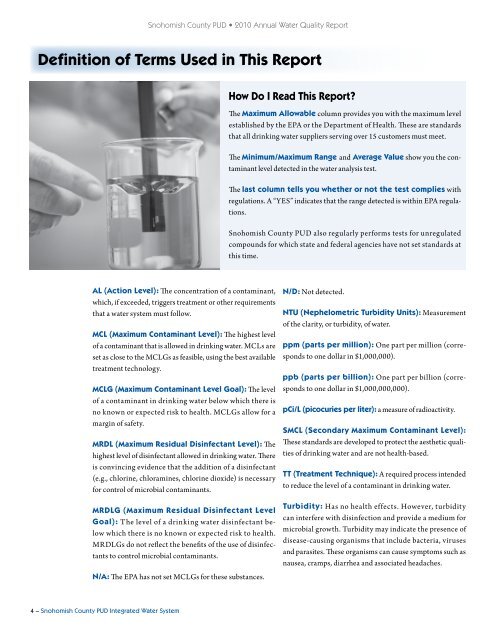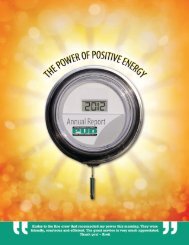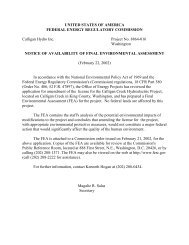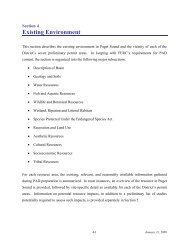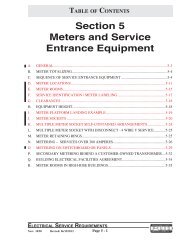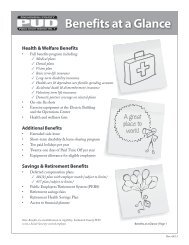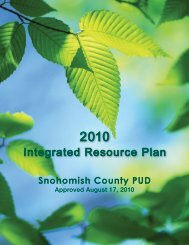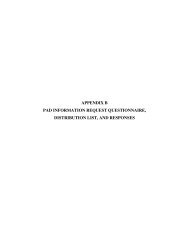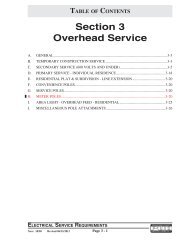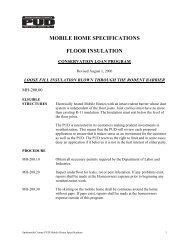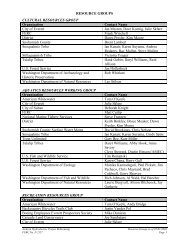Your Water Is Safe To Drink! - Snohomish County PUD
Your Water Is Safe To Drink! - Snohomish County PUD
Your Water Is Safe To Drink! - Snohomish County PUD
Create successful ePaper yourself
Turn your PDF publications into a flip-book with our unique Google optimized e-Paper software.
<strong>Snohomish</strong> <strong>County</strong> <strong>PUD</strong> • 2010 Annual <strong>Water</strong> Quality Report<br />
Definition of Terms Used in This Report<br />
How Do I Read This Report?<br />
The Maximum Allowable column provides you with the maximum level<br />
established by the EPA or the Department of Health. These are standards<br />
that all drinking water suppliers serving over 15 customers must meet.<br />
The Minimum/Maximum Range and Average Value show you the contaminant<br />
level detected in the water analysis test.<br />
The last column tells you whether or not the test complies with<br />
regulations. A “YES” indicates that the range detected is within EPA regulations.<br />
<strong>Snohomish</strong> <strong>County</strong> <strong>PUD</strong> also regularly performs tests for unregulated<br />
compounds for which state and federal agencies have not set standards at<br />
this time.<br />
AL (Action Level): The concentration of a contaminant,<br />
which, if exceeded, triggers treatment or other requirements<br />
that a water system must follow.<br />
MCL (Maximum Contaminant Level): The highest level<br />
of a contaminant that is allowed in drinking water. MCLs are<br />
set as close to the MCLGs as feas i ble, using the best available<br />
treatment technology.<br />
MCLG (Maximum Contaminant Level Goal): The level<br />
of a contaminant in drinking water below which there is<br />
no known or expected risk to health. MCLGs allow for a<br />
margin of safety.<br />
MRDL (Maximum Residual Disinfectant Level): The<br />
highest level of disinfectant allowed in drinking water. There<br />
is convincing evidence that the addition of a disinfectant<br />
(e.g., chlorine, chloramines, chlorine dioxide) is necessary<br />
for control of microbial contaminants.<br />
MRDLG (Maximum Residual Disinfectant Level<br />
Goal): The level of a drinking water disinfectant below<br />
which there is no known or expected risk to health.<br />
MRDLGs do not reflect the benefits of the use of disinfectants<br />
to control microbial contaminants.<br />
N/A: The EPA has not set MCLGs for these substances.<br />
N/D: Not detected.<br />
NTU (Nephelometric Turbidity Units): Measurement<br />
of the clarity, or turbidity, of water.<br />
ppm (parts per million): One part per million (corresponds<br />
to one dollar in $1,000,000).<br />
ppb (parts per billion): One part per billion (corresponds<br />
to one dollar in $1,000,000,000).<br />
pCi/L (picocuries per liter): a measure of radioactivity.<br />
SMCL (Secondary Maximum Contaminant Level):<br />
These standards are developed to protect the aesthetic qualities<br />
of drinking water and are not health-based.<br />
TT (Treatment Technique): A required process intended<br />
to reduce the level of a contaminant in drinking water.<br />
Turbidity: Has no health effects. However, turbidity<br />
can interfere with disinfection and provide a medium for<br />
microbial growth. Turbidity may indicate the presence of<br />
disease-causing organisms that include bacteria, viruses<br />
and parasites. These organisms can cause symptoms such as<br />
nausea, cramps, diarrhea and associated headaches.<br />
4 – <strong>Snohomish</strong> <strong>County</strong> <strong>PUD</strong> Integrated <strong>Water</strong> System


